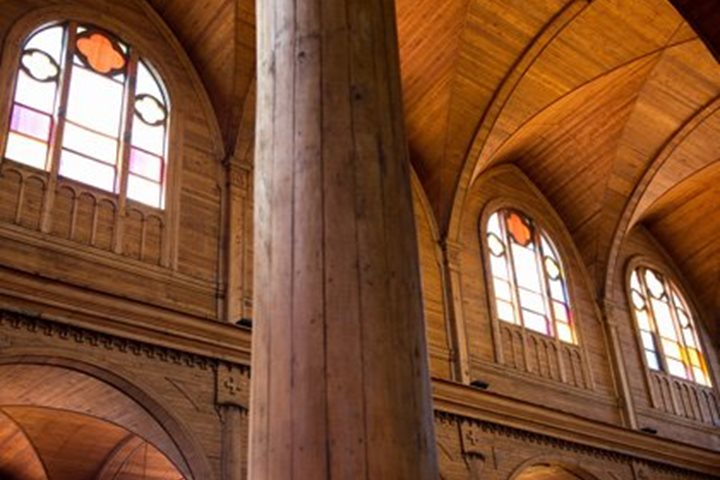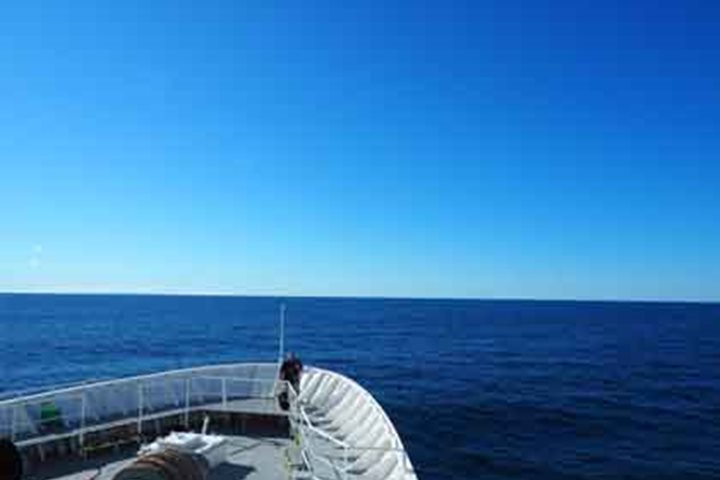The inimitable voice from the expedition leader wakes us up early after another night for all on board National Geographic Explorer. After a hearty breakfast, for it is to be a long day, we head off for the different tour options for the morning.
One of those options was a tour of the port city of Arica, the northernmost along the long Chilean coastline. The church, near the town plaza, was our first port of call. From there we headed for the Morro de Arica, the highest point of the city from where we appreciated commanding views of our surroundings. Just below this landmark there is an area where the breakers can reach heights of 26 feet and even more in winter. This venue is part of the World Surfing Circuit. The last place we visited was the archaeological museum in the Azapa Valley. The museum has an impressive collection of mummies collected in the high Andean peaks.
The other option was a bird watching tour that included two great stops, one on the coast with a small wetland. The other was some distance away and up a valley on the outskirts of Arica. We were able to see a good number of species in both these habitats; including Puna ibis, skimmers, skuas, and the beautiful cinnamon teal. In the other locality we spotted the gorgeous vermillion flycatcher, screaming cowbirds, cinereous cone bill, but the bird that topped them all was the Chilean woodstar, one of the hummingbirds. This species is becoming increasingly rare due to habitat encroachment and overuse of pesticides in this crop growing area. We felt privileged to see several of these lovely little birds during our pleasant morning walk.
Shortly after lunch we were all headed for the airport to board the charter flight for Calama. Everything went extremely smoothly and in a short time the LAN flight was headed up into the skies. Fifty minutes later we had landed and, after retrieving the luggage, were greeted by our different guides who led us to our buses, which were soon on their way to San Pedro de Atacama.
Along the way as the buses climbed further and further we were gifted a chuspa, a little woven bag, containing information on our destination as well as some coca leaves. We were encouraged to put a couple of leaves into our cheeks and that as we swallowed our saliva, now mixed with coca, it would help us to adjust to the altitude.
All around us the landscape had changed to one of extreme starkness, almost devoid of plant life and rich in the colors of the many minerals, which made up the mountainous terrain. At one point our guide informed us that we were above 10,000 feet. A long way in the distance a green oasis appeared, it was San Pedro de Atacama, our destination. The slow descent was made and for the final part we went through the most lovely landscape; there were rich reds of different hues, whites from the salt in the area as well as many shades of brown and gray. We were aghast at the beauty.
We made our way into San Pedro through narrow adobe walled streets to our respective hotels. After the check-in we had some time to relax before meeting up in the dining area for our evening meal. It was so welcome, as well as being delicious, and well accompanied with good wines or other “beverages.”
Some of us headed out after dinner for a stargazing experience. As we awaited the arrival of our transport we all commented on the incredible number of stars visible. The clean air and cloudless skies make this possible. The experience was fascinating. It commenced with an overview of the history of astronomy to the present. After the presentation we are able to see some of these wonders closer through the many telescopes that were on offer.
It was a fitting finale to this first day in the Puna de Atacama, a remarkable place on the planet. We put our heads down to get some welcome rest, maybe recalling the many memorable images we witnessed today, as well as looking forward to the day ahead.







